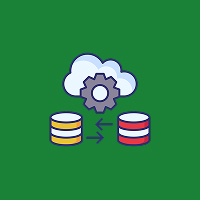It can be challenging to manage an eCommerce store. Magento makes it easier using advanced product management tools. Its features allow you to make your product catalog more efficiently, optimize operations, create better customer experiences, and sell more. Here is how to effectively use Magento’s more advanced product management features:.
1. Explore Magento’s Product Types
Magento supports different product types. This is for different business needs. Among the types are:
- Simple Products: These are items without variations.
- Configurable Products: These are ideal for items with variations like size or color.
- Grouped Products: This enables multiple related products to be sold in one offering.
- Virtual Products: These include membership and services.
- Bundle Products: These enable customers to build their own combinations of products.
- Downloadable Products: These are ideal for digital goods like eBooks or software.
How to get started:
- Navigate to Catalog > Products in your Magento admin panel.
- Select the product type and configure the details based on your store’s requirements.
2. Streamline Updates with Bulk Product Management
Magento enables bulk updates, saving time and effort when modifying multiple products.
Steps to bulk update:
- Go to Catalog > Products and select the products to update.
- From the Actions dropdown, choose Mass Update to adjust prices, inventory, or attributes simultaneously.
3. Optimize Pricing with Advanced Tools
Magento’s advanced pricing options provide dynamic ways to attract customers and boost sales:
- Tier Pricing: Offer discounts based on quantity purchased.
- Special Pricing: Create time-limited promotions.
- Customer Group Pricing: Set customized prices for specific customer groups like wholesalers.
To configure:
- Open the product in your admin panel, navigate to Advanced Pricing, and set up pricing rules tailored to your strategy.
4. Enhance Products with Attributes
Attributes define product characteristics, such as size, material, or color, improving search and filtering.
Steps to manage attributes:
- Go to Stores > Attributes > Product to create custom attributes.
- Assign these attributes to your products for better organization and user experience.
5. Manage Inventory Efficiently
Magento’s inventory management tools help maintain stock levels and avoid shortages. With multi-source inventory (MSI), you can even manage stock across multiple warehouses.
How to manage inventory:
- Navigate to Catalog > Products, select a product, and configure inventory settings under Quantity and Stock Status.
6. Organize Products with Categories
Proper categorization enhances navigation and improves user experience.
How to categorize products:
- Go to Catalog > Categories, create or edit categories, and assign products.
- Use SEO settings for each category to increase visibility and attract customers.
7. Automate with Dynamic Product Rules
Magento allows you to automate product sorting and promotions using rules.
How to set up rules:
- Use Cart Price Rules and Catalog Price Rules under Marketing to create promotions based on product attributes or purchase conditions.
8. Enrich Product Pages with Media and Descriptions
Engaging media and detailed descriptions are crucial for converting visitors into customers.
How to enhance product pages:
- Go to the product’s Images and Videos section to upload visuals.
- Write compelling, SEO-friendly descriptions under the Content tab to improve search rankings and inform customers.
Conclusion
Magento’s advanced product management tools are designed to simplify and elevate your eCommerce operations. From optimizing product types to implementing dynamic pricing and leveraging detailed attributes, these features empower you to manage your catalog with ease. By using these tools, you can create a streamlined shopping experience, improve store performance, and boost customer satisfaction.
Contact Us Today













 Database Development
Database Development












































